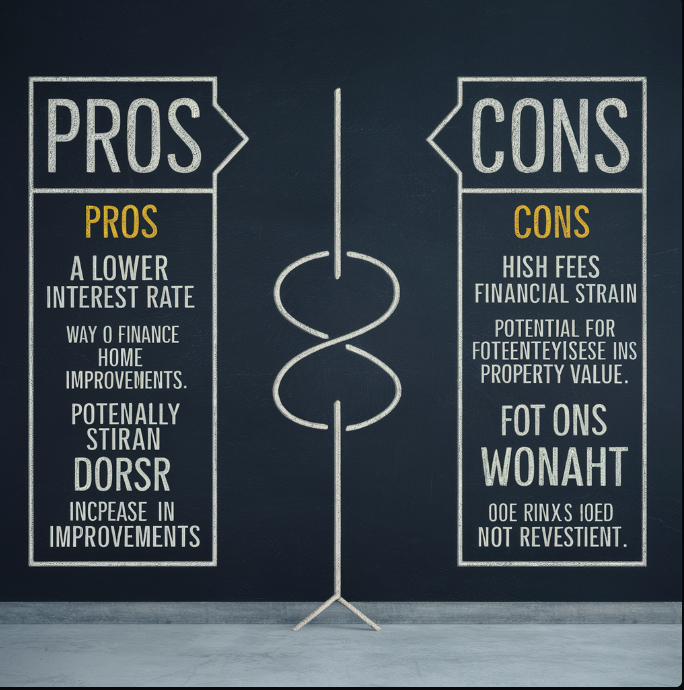Renovation loans are a popular financing option for homeowners in Singapore looking to upgrade their homes. Understanding the pros and cons of these loans is crucial for making informed financial decisions. This article will explore the benefits and drawbacks of renovation loans, helping you decide if this financing option is right for you.
Key Takeaways
- Renovation loans can increase property value and provide immediate access to funds.
- They come with interest rates and fees that may add up over time.
- It’s essential to compare different loan options and assess your financial needs before deciding.
What are Renovation Loans?
Renovation loans are specialized loans designed to finance home improvement projects. They can be used for various purposes, such as upgrading kitchens, bathrooms, or expanding living spaces. In Singapore, banks and financial institutions offer renovation loans with flexible terms and conditions to meet different renovation needs.

Pros of Renovation Loans
Increased Property Value
One of the primary benefits of renovation loans is the potential to increase your property’s value. By upgrading your home, you can enhance its appeal and market value, making it a more attractive option for future buyers. Well-planned renovations can yield a high return on investment, especially in competitive markets like Singapore.
Flexible Financing Options
Renovation loans offer flexible financing options, allowing you to choose terms that best suit your financial situation. Whether you prefer a shorter repayment period with higher monthly payments or a longer term with lower payments, there’s a loan structure available to meet your needs. This flexibility helps manage your budget effectively.
Immediate Access to Funds
Renovation projects can be costly, and saving up for them may take years. Renovation loans provide immediate access to the necessary funds, enabling you to start your project without delay. This can be particularly beneficial if urgent repairs or upgrades are needed to maintain your home’s safety and functionality.
Potential Tax Benefits
In some cases, the interest paid on renovation loans may be tax-deductible. While this benefit depends on specific tax regulations and individual circumstances, it’s worth exploring with a financial advisor. Tax deductions can help offset the overall cost of the renovation, making the loan more affordable in the long run.

Cons of Renovation Loans
Interest Rates and Fees
One of the significant drawbacks of renovation loans is the interest rates and fees associated with them. Over time, these costs can add up, making the loan more expensive than initially anticipated. It’s crucial to carefully review the loan terms and compare different offers to find the most cost-effective option.
Repayment Burden
Taking on a renovation loan means committing to monthly repayments, which can strain your finances. If not managed properly, this repayment burden can lead to financial stress and impact your ability to meet other financial obligations. It’s essential to assess your repayment capacity before taking on a loan.
Risk of Over-Borrowing
Renovation loans can be tempting, leading some homeowners to borrow more than necessary. Over-borrowing can result in higher debt levels and increased financial pressure. To avoid this, it’s important to have a clear renovation budget and borrow only the amount needed to complete your project.
Impact on Credit Score
Taking out a renovation loan can impact your credit score, especially if you miss payments or default on the loan. A lower credit score can affect your ability to secure future loans and may result in higher interest rates. Maintaining a good credit score by making timely payments is crucial.
How to Choose the Right Renovation Loan
Before diving into the process of selecting a renovation loan, it’s helpful to see a comparison of the different aspects to consider. The table below highlights key factors to look at when comparing renovation loan options.

Comparison Table of Renovation Loan Factors
| Factor | Description | Importance |
| Interest Rates | The percentage charged on the loan amount, affecting the total repayment cost. | High |
| Repayment Terms | The duration over which the loan must be repaid. | High |
| Fees and Charges | Additional costs such as processing fees, administrative fees, etc. | Medium |
| Loan Amount | The maximum amount that can be borrowed. | High |
| Eligibility Criteria | Requirements to qualify for the loan, such as income level, credit score, and employment status. | Medium |
| Tax Benefits | Potential deductions available on the interest paid. | Medium |
| Flexibility | Options for adjusting repayment plans or loan terms if needed. | Medium |
| Application Process | The ease and speed of applying for and receiving the loan. | Medium |

Conclusion
Renovation loans offer a practical solution for financing home improvement projects. While they come with benefits such as increased property value and immediate access to funds, they also have drawbacks like interest rates and repayment burdens. Carefully weigh these pros and cons, assess your financial situation, and choose the loan option that best fits your needs.
Call to Action
Consult with a financial advisor to explore your renovation loan options. Use online resources to compare different loans and find the most suitable one for your project. Making an informed decision will ensure your renovation journey is smooth and financially sound.
This structured approach, with highlighted important aspects in the table, provides a clear comparison and helps in making an informed decision about renovation loans.


